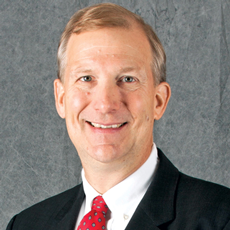
As politics in the U.S. remain more polarized than ever, could it be that at least federal regulators and the caregivers they oversee are becoming more civil to one another?
One might conclude so, if judging by the recent notice from the Centers for Medicare & Medicaid Services that it doesn’t intend to keep paying nursing homes billions of dollars more than intended. The agency said it’s open to suggestions on how to rectify the situation, including comments from providers.
That CMS would be taking corrective action is hardly a bombshell. It has been assumed by anyone with even the slightest interest in the sector since pre-pandemic times, or shortly after the Patient Driven Payment System went into effect Oct. 1, 2019, that something like this could happen.
After a year of coronavirus carnage, it’s time to look ahead again, as CMS noted when releasing its SNF PPS fiscal 2022 payment proposal April 8. The system overpaid providers by 5%, or about $1.7 billion, CMS said. Showing some contrition (or mercy?) perhaps, agency leaders have intimated that pay rate reductions could be phased in, either over a couple of years or more quickly but with a very long ground-softening period.
It’s also been suggested that the excessive payments might not have really been as high as 5%, so that also could soften the impact and breadth of corrective action. I wouldn’t put too much stock in that theory, however, since regulators have had 18 months of claims data to pour over, COVID or not. Let’s see whose bean counters prevail.
The current situation is notably different from 10 years ago, when changes to the RUGs payment system in place resulted in providers claiming a nearly 13% jump in payments. It took regulators less than a half year to recognize and announce — in a non-compromising tone and with no solicitation for comments — what was happening. A massive take back occurred quickly, no questions asked.
The recently announced 5% rate is only a few percentage points above what CMS SNF team leader John Kane told a spring 2019 conference might be acceptable, should PDPM prove more generous than the budget-neutral goal envisioned by regulators.
There’s another big difference between now and 10 years ago: This time, providers aren’t being accused of gaming the system via upcoding or other unsavory acts. As much as providers may want to claim that RUGs had a lousy construct (which is true, to some degree) and that providers simply exploited it (“in a good way”), the overwhelming percentage of patients who wound up in the highest reimbursement categories would indicate otherwise.
The subsequent path littered with federal accusations and multi-million dollar settlements by providers also would strongly indicate otherwise.
One of the most stunning days in my 20 years of covering long-term care came when former CMS Administrator Tom Scully went off script as a keynote speaker at a National Investment Center for Senior Housing and Care conference in 2012. He dramatically told the crowd of investors how he had pleaded with provider leaders not to abuse the system and try to pocket billions of dollars not intended for them.
“I jumped up and down and begged them. I told them they can’t say they ‘found’ $5 billion [in extra Medicare reimbursement payments under a new system],” he recalled.
His warnings were not heeded, he noted, and his prediction that the industry would suffer a “disaster” and a credibility problem for many years came painfully true.
This time, however, CMS took plenty of time to create a system that both it and providers agree is better. (Many in the rehab therapy world might disagree.) The agency, if you recall, even postponed PDPM’s introduction by a year because initial provider and public outcry over original discussion points was so heated.
That’s one reason nobody’s heard — at least not publicly yet — accusations of providers acting unethically or illegally.
This time, maybe it was CMS’s fault the payouts were too generous, and agency leaders seem to acknowledge as much. This is a notion that Kane and CMS colleague Evan Shulman, the head of its nursing home division, acknowledged to me and others at the 2019 conference referred to above might be possible. Nobody knew exactly what was going to happen, they admitted, quickly adding that regulators would be watching for significant changes in utilization patterns.
(“Utilization patterns” — that’s one of those diplomatic ways of saying upcoding or otherwise gaming the system.)
So CMS has learned, and apparently so have providers, who don’t need to touch a hot stove twice to learn how badly it can burn.
The comment period on the payment rule closes June 7. The feedback from that should provide plenty of fodder to deliver one of the most interesting summer school terms in a long time.
Follow Executive Editor James M. Berklan @JimBerklan.




